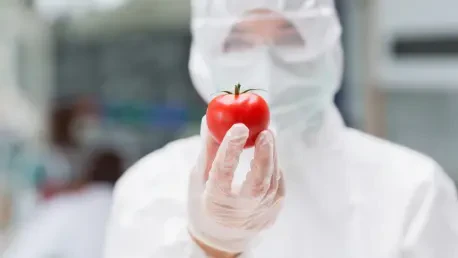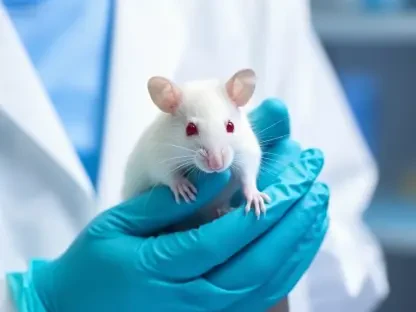The regulatory landscapes in the United States have experienced significant changes in recent years, particularly concerning food safety. The Trump administration’s regulatory modifications marked a turning point that is provoking broad concern among public health advocates and industry experts. These changes, characterized by a move towards deregulation, are potentially undermining critical safety systems designed to protect the public from foodborne illnesses. One prominent case illustrating the human impact of these policy shifts involves Colton George, a 9-year-old from Indiana who suffered severe health issues after consuming E. coli-contaminated lettuce. Such incidents underscore the systemic vulnerabilities exacerbated by these regulatory changes and highlight the ongoing debate over public health and business interests in the food industry.
Impact of Deregulation on Food Safety
The move towards anti-regulatory policies under the Trump administration has raised alarms across various sectors concerned with public health and safety. At the forefront of these concerns is the tendency to prioritize economic gains over stringent food safety practices. Government watchdogs and consumer advocates argue that these policies have eroded some of the essential defenses against foodborne pathogens. By scaling back regulations and favoring cost-cutting measures, critical safety nets appear weakened, which could lead to an increased risk of contamination and illness. The administration reduced salmonella poultry regulations, suspended Food Emergency Response Network Proficiency Testing, and delayed implementing a vital rule for speeding up contaminated food identification. These measures challenged oversight institutions like the FDA and USDA, which play critical roles in safeguarding the food supply chain.
Furthermore, these regulatory changes have often limited public communication surrounding food safety incidents, potentially leaving consumers in the dark during outbreaks. One significant example is the silence surrounding the ranch implicated in the E. coli outbreak that affected Colton George. Despite identifying the responsible parties internally, revealing their identities to the public was delayed, raising concerns about transparency and accountability. Such practices are a departure from established protocol, emphasizing a growing focus on protecting business interests over consumer safety. This approach has sparked a broader conversation about the balance between industrial profitability and public health, with numerous advocates urging a re-evaluation of policy priorities to ensure a robust food safety system.
Communication Breakdown and Enforcement Weaknesses
A notable decline in communication from leading federal agencies overseeing food safety, namely the FDA, has become evident in recent years. Traditionally, such agencies have been transparent about outbreaks and their sources, ensuring the public remained informed about potential threats. However, this crucial practice has suffered setbacks due to policy changes, leaving the public inadequately informed about threats posed by potentially unsafe food items. When foodborne illness outbreaks occur, timely communication is critical to protecting public health, but official channels of information dissemination have been reduced. The reluctance to publicly disclose detailed information about responsible parties during outbreaks illustrates a concerning shift in agency policies that must be addressed to maintain consumer trust and safety.
In tandem with communication issues, the dismantling of dedicated enforcement units within government agencies poses another critical challenge to maintaining food safety standards. The elimination of a Justice Department unit focused on pursuing legal actions against companies distributing contaminated food exemplifies this problem. Without such dedicated teams, enforcement actions against negligence become less frequent, weakening deterrents and accountability standards. This shift leaves a gap in punitive measures necessary to punish violators and discourages future misconduct. Diverse stakeholders, including former federal employees and public health researchers, emphasize that these changes collectively erode the robustness of existing food safety frameworks, highlighting the urgent need for renewed commitments to enforcement and regulation.
Impacts on Local Agencies and Economic Costs
Shifting regulatory burdens from federal to state and local agencies without providing necessary resources or training has compounded the challenges facing food safety oversight. Many local agencies find themselves under-resourced and ill-prepared to fill the void left by federal rollback policies. This transfer of responsibilities has left local officials struggling to keep up with the demands of comprehensive food safety management, putting the public at heightened risk. As state and federal responsibilities realign, inadequately equipped local agencies may face insurmountable tasks, potentially compromising safety standards crucial for preventing foodborne illnesses in communities nationwide. The burden of oversight cannot effectively shift to local levels without appropriate resource allocations and support.
In addition to regulatory challenges, foodborne illnesses remain a significant economic concern. With millions of Americans affected by foodborne diseases annually, the economic toll is substantial, reaching tens of billions of dollars due to medical costs and productivity losses. These diseases inflict long-term health consequences on affected individuals, underscoring the importance of preventive measures fueled by effective regulatory frameworks. Reducing administrative oversight contributes to avoidable outbreaks, further escalating healthcare costs and economic losses associated with foodborne illnesses. Strategically addressing these challenges instead of weakening regulatory defenses would promote both public health and economic resilience in a comprehensive approach.
International Inspection Efforts and Skepticism
The Trump administration’s focus on foreign food manufacturing led to increased scrutiny of imported goods via offshore inspections, aiming to bolster safety for imported food products. However, experts remain skeptical about the practicality and effectiveness of these measures. Potentially excessive bureaucratic hurdles may undermine actual enforcement of surprise inspections, blunting their impact. Challenges such as acquiring travel visas in time and other logistical considerations can inadvertently alert foreign companies to upcoming checks, compromising their intended surprise element. Even as domestic regulatory efforts were dialed back, the heightened focus on foreign inspections raises questions about balancing these priorities without jeopardizing domestic food safety.
The implementation of international inspection initiatives illustrates an evolving policy landscape requiring careful consideration. Globalization of food production necessitates reliable systems for maintaining high safety standards across borders, but efficient execution and coordination remain essential. While well-intentioned strategies seek to ensure imported food safety, careful orchestration is necessary to prevent unintended consequences limiting domestic regulatory coverage. Coordination and collaboration with international partners, along with resource investment in domestic venues, will determine ultimate success in building robust global food safety frameworks aligning harmoniously with domestic needs.
Human Impact and Call for Transparency
Colton George’s story serves as a poignant reminder of the profound human cost associated with safety lapses in the food supply chain. His ordeal, including suffering severe illness due to contaminated lettuce, underscores the real-world implications of regulatory gaps exacerbated by policy modifications. The distress experienced by Colton’s family poignantly illustrates the necessity of transparency and accountability, as they navigate the complexities of nearly losing their child to a preventable illness. Such narratives resonate with advocates emphasizing the urgency of public awareness and responsive action to counteract systemic failures compromising consumer safety.
Publicizing personal stories like Colton’s highlights not only tragedies but also the importance of improved safety measures preventing similar incidents. The George family’s experience underscores the broader implications of inadequate safety frameworks, emphasizing the need for collaboration across sectors in pursuit of optimizing regulatory effectiveness. Transparency in communication, civil enforcement of safety regulations, and a commitment to prioritizing public health can drive meaningful change ensuring consumer protection remains paramount amidst evolving policy shifts and challenges.
Renewed Focus on Enforcement and Public Health Protections
The Trump administration’s move toward anti-regulatory policies has sparked concern among sectors focused on public health and safety, especially regarding food safety. Critics, including government watchdogs and consumer advocates, argue that prioritizing economic benefits has weakened key defenses against foodborne pathogens. By reducing regulations and favoring cost-saving measures, the risk of contamination and illness appears to be rising. Specific actions like cutting back on salmonella poultry regulations, pausing the Food Emergency Response Network Proficiency Testing, and delaying critical rules for quicker identification of contaminated food have challenged oversight bodies such as the FDA and USDA, which are vital in protecting the food supply.
Moreover, these policy changes often restrict public communication about food safety incidents, potentially leaving consumers unaware during outbreaks. A telling case is the E. coli outbreak linked to a ranch, which affected Colton George. Despite internally identifying those responsible, public disclosure was delayed, highlighting concerns about transparency. This approach, favoring business interests over consumer safety, deviates from established protocols and has ignited discussions about balancing industrial profits with public health. Many advocates are calling for a reassessment of policy priorities to maintain a strong food safety framework.









